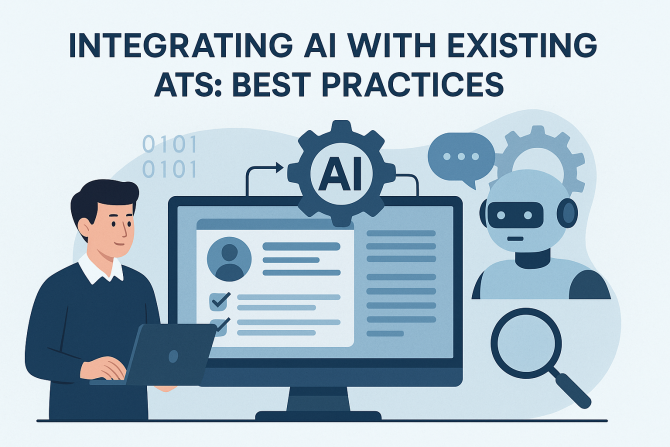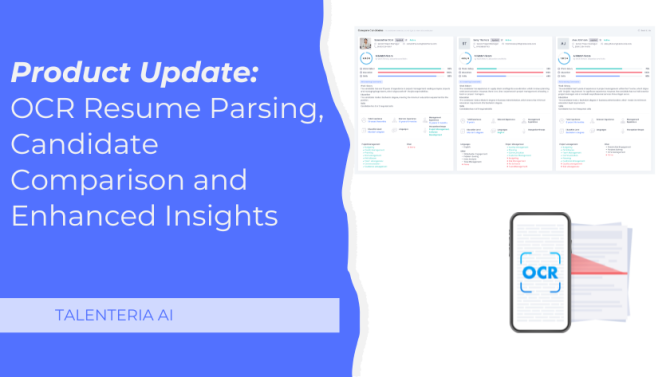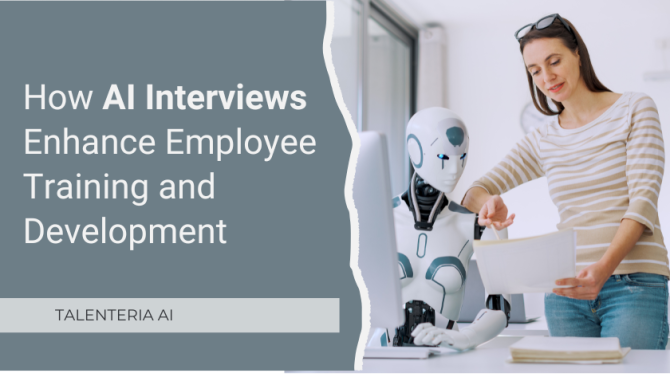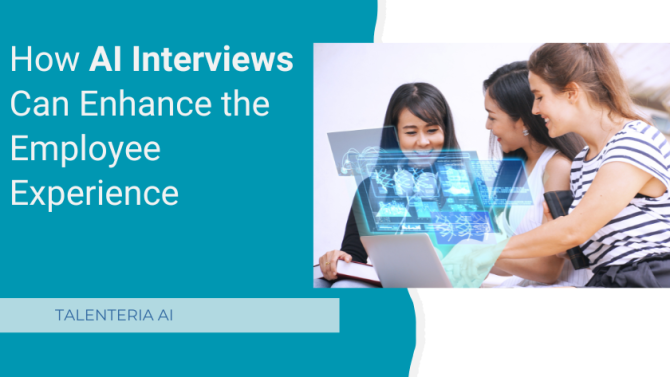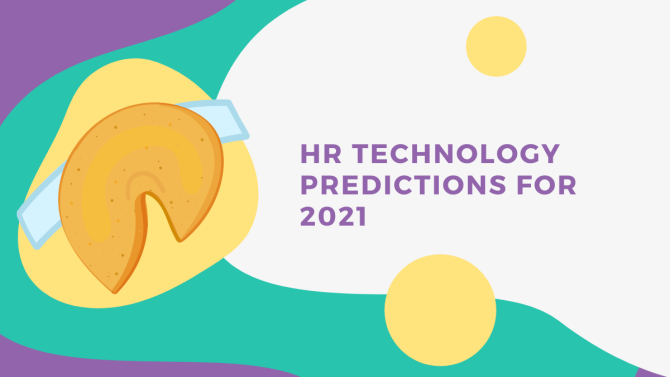
We live in a digitally dominated world, where all aspects of life have leveraged technological advancements to make day-to-day tasks much easier, quicker, more accurate, and more cost-effective. It was only a matter of time that this adaptation would extend to the HR industry, and that time has come. That time is now.
In this article, we are going to examine current human resources technology trends and predict how HR technology is going to transform the industry. Is HR technology the future of HR?
HR Technology Trends
Here are the top HR technology trends to look out for that we think will revolutionize the HR industry:
AI Technology and Recruitment
Application Tracking Systems (ATS) are already an increasing trend in HR departments across the world. It won’t be long before AI recruitment completely replaces the majority of, if not all, traditional manual practices for every department.
With its sophisticated algorithms, a great ATS can be used to streamline every step of the recruitment process with functions such as:
- Attracting candidates
- Resume and application form evaluation
- Automated interview scheduling
- Candidate engagement
- Candidate onboarding
- Candidate retention
The use of ATS will become commonplace because of its efficiency and effectiveness. Turning data into quality hires who will thrive within the company. As the technology continues to develop, the accuracy of its functionality will increase, and with it, its implementation.
As these algorithms replace human preconceptions of candidates, whether conscious or subconscious, it is largely believed that automated candidate resume selection will see the elimination of biased recruiting.
Due to this benefit being assimilated into the mainstream recruitment process, diverse recruitment sectors may shrink and gradually become obsolete.
1. AI Technology and Employee Management
Integration of AI HR technology doesn’t just stop at candidate recruitment stages. HR functions involving existing employees also benefit. Data analytical tools can identify preferred learning styles and ambitions. This can help HR departments to determine potential upskilling opportunities within their workforce and assist in creating customized training programs.
In addition, employee engagement can be mapped out and monitored with reports and visualizations, which can give valuable insight into the current state of the workplace and its workers. With the frequent observation of these metrics, HR departments can keep tabs on this crucial metric and tackle any problematic factors that may be causing engagement to slip. In turn, retention rates will be reduced, and productivity is also likely to rise.
2. Employee Self-Service Software
Employee self-service software has rapidly been integrating among medium to large-sized companies to offload administrative tasks and subsequently save HR departments time to focus on other duties. This software allows employees to log their work hours, their absences and request days off.
But employee self-service does more than just give employees access to their personal day entitlements; it provides employees with a direct line to the HR department. Employees can submit requests for anything they would usually need to contact an HR representative for, some of which include:
- Drafting and amending official documentations
- Completing or getting updates on tax liabilities
- Changing personal information
- Requesting proof of remuneration
- Booking or canceling a training course
- Requesting certifications
- Approval and processing of expenses
In addition, HR can use the system to send automated workplace updates. Surveys have shown the interactivity stimulated by self-service software to boost overall morale.
The data gathered is automatically organized and easily accessible. It can also inform HR departments on various functions and policies and assist in reporting and workforce planning.
It is safe to say that employee self-service will be widely used in the near future, as the benefits of accelerating, standardizing, and streamlining these common HR responsibilities are easy to see and self-evident.
3. IoT-Empowered Activity Trackers
IoT-empowered HR technology is an intelligent networking system that allows tracking and monitoring location, productivity, efficiency, people data, and communication patterns. Through the use of custom mobile apps or wearable devices, an abundance of data can be collected and used to analyze and get actionable insights. The data could inspire department reorganization or lucrative team collaboration.
Also, since everyone on the system is connected, employees, managers, and HR will have round-the-clock communicational access to each other, meaning real-time feedback and support – vital for continuous performance management. Locating the people you need will be made easy and is especially in large working environments.
Although it is important to note that standards and regulations still have a long way to go for IoT, and the ethics of privacy issues have been debated.
4. Harassment Reporting Tools
In light of the Me-Too movement, people have been empowered and encouraged to speak out and report any untoward behaviors such as sexual harassment and sexual assault. It is in the best interest of all HR departments and companies to take every report seriously, and it is imperative we deal with the delicate situation attentively.
It comes as no surprise that as times have become more progressive, the new tech would be invented to make reports of harassment to HR much more comfortable. Reports can also extend to include any other kind of harassment, perhaps due to discrimination or workplace bullying.
Employees will be able to submit forms or engage in a two-way chat -both options can be done anonymously to protect the identity of the victim. An incident management report is integrated on the backend for HR departments to review and take action.
5. On-Demand Talent Platforms
It is estimated that 48% of the Gen Z workforce are currently working as freelancers. Further figures show that freelance work has become commonplace for those seeking flexibility or a supplementary income. This is a wealth of talent and highly demanded skills that recruitment efforts could miss if they do not adopt on-demand models into their HR strategy.
Utilizing freelance platforms for outsourcing could be beneficial in terms of filling short-term or temporary but hard-to-fill positions.
6. Remote Working Technologies
Due to remote working becoming increasingly common, necessary, and preferred – there will be more technological developments to ensure viability. This would mean that HR departments will also see upgraded technological setups to accommodate these changes.
A major component to be affected is remote recruitment and expansion of remote management and engagement with long-distance workers. To adapt, there will be further improvements on existing video conferencing software and online file-sharing platforms.
A unified data storage/file-sharing system is likely to be cloud-based, allowing access to data and HR tools. By having everything in one place, handling multiple solutions will be easier and faster. The next step for this HR technology will be to integrate blockchain technology and the public ledger system made famous by the emergence of cryptocurrency. This will ensure data integrity, transparency, and security.
It seems a safe bet that HR technology is the way of the future. As it currently stands, it is already transforming the way we perform HR processes and functions.
As evidenced by our list of HR technology trends, the utilization of complex data science algorithms can perform automated processes. Furthermore, it can provide a comprehensive analysis to aid in smarter data-driven decision-making. In other words, the more advancements made in the field of HR tech, the easier your job will get!
For more information on how we can be a part of your HR transformation, contact Talenteria today to streamline your recruitment process! We are the #1 choice for recruiters: this streamlined recruitment management platform & career portal platform helps you improve your employer brand, attract candidates, and develop the ideal job journey.

